Make your backyard extra fun while teaching your children about the Olympics with these super simple Olympic Activities for Preschoolers!
This summer marks the first time my kids are old enough to learn about the Olympics.
And I’m especially excited!
During the 2010 Winter Games, I met my husband. Of course, I doubt they’ll really understand all of the intricacies of the games or even the story of how we met. But the opportunity to celebrate the games is too good to pass up. Thanks to some inspiration on Pinterest and my own brainstorming, I’ve found some really simple Olympic activities for preschoolers to celebrate and teach about the Olympics.
Simple Olympic Activities for Preschoolers
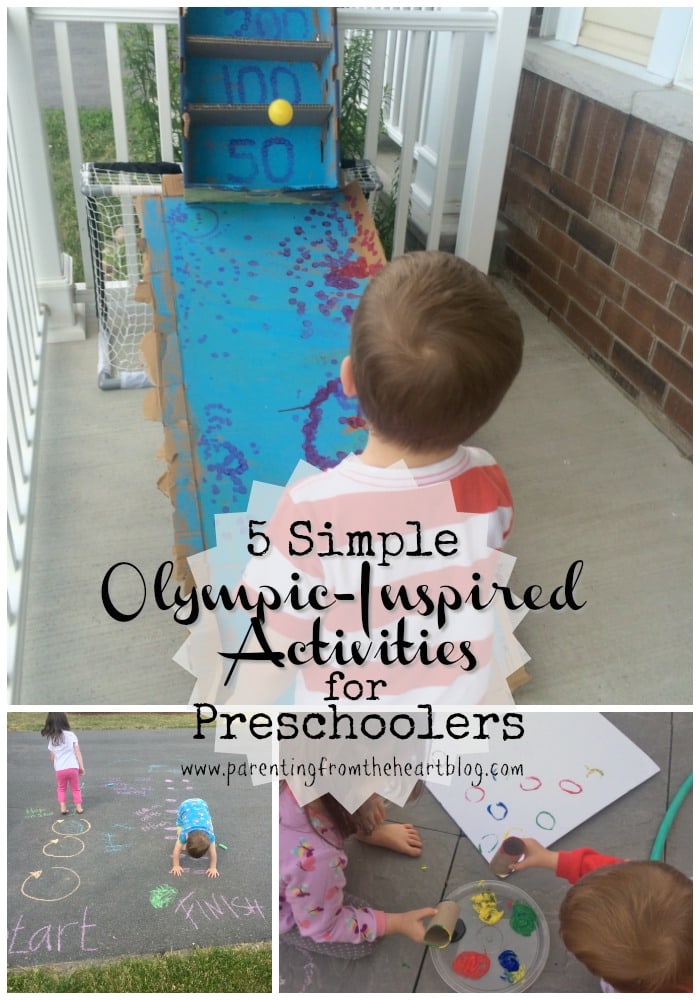
1. Olympic Ring Stamping
What you need
- Toilet paper or paper towel roll(s)
- Tempera paint in black, green, red, yellow, and blue
- Poster board or paper
What to do
- Put tempera paint in a plastic lid.
- Provide children with toilet paper rolls and let them stamp.
- Explain the significance of the rings. The colours were the original colours from all the participating countries’ flags and the rings symbolise unity 🙂
[bctt tweet=”Check out these awesome Olympic Activities for Preschoolers #playbasedlearning #kidsactivities” username=”parentfromheart”]
2. Shot Put Skee Ball
What you need
- Tempera paint (optional)
- Cardboard boxes
- Box cutter or serrated knife
- Plastic balls
What to do
Check out the entire how-to here or here.
3. Long Jump
It does not get any easier than this!
What you need
- A stretch of grass
- 1/2 cup cornstarch
- 1/2 cup water
- Spray bottle
What to do
The spray chalk is optional. We’ve done this without any markings on the grass and my kids have had loads of fun. However, the chalk is fun to have on hand for later too!
- In a srpray bottle, combine equal parts water and cornstarch.
- Shake well.
- Spray a start line perpendicular to where the kids will be jumping and a line that will run parallel to where the jumpers will be jumping.
- Mark numbers to the left. We used 10 20 30 40 50 just to work on counting by tens. It doesn’t have to be actual measurements, just arbitrary numbers to denote distance.
- Have kids run and then jump once they hit the start line. They will likely want to do this again and again and again and AGAIN!
4. Chalk Hop-Scotch Race
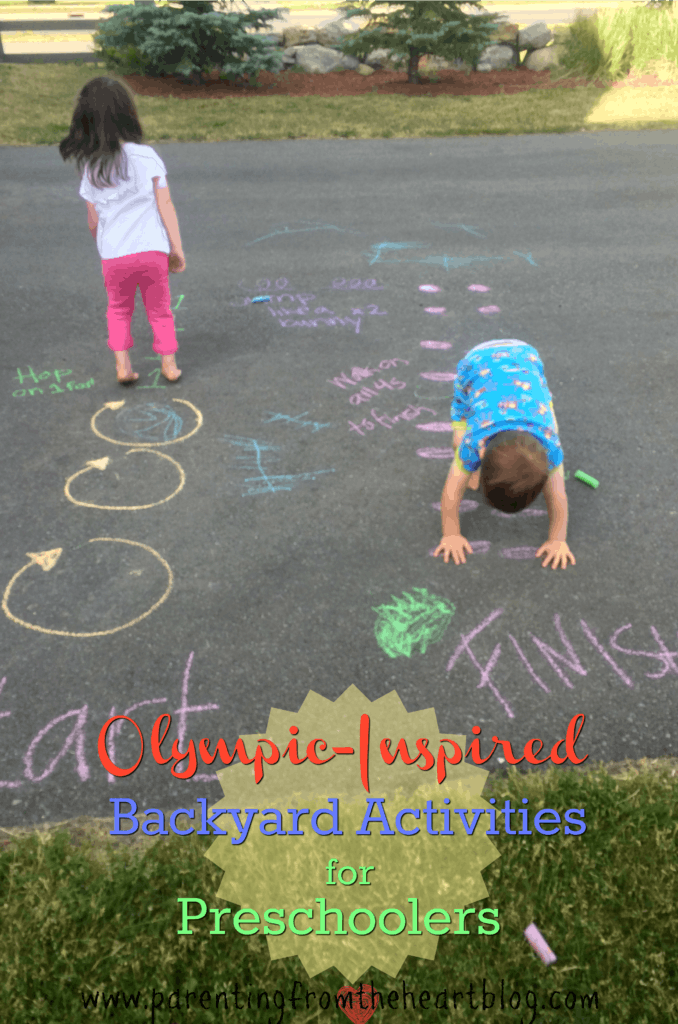
What you need
- A stretch of pavement
- Sidewalk chalk
What to do
- Take sidewalk chalk and create instructions that involve different actions. Because my kids can’t read yet, I tried to make symbols that were easy to understand. First, they were to twirl three times, then hop on one foot (or skip). Then, jump, then walk on all fours! To see a more elaborate version (and the inspiration behind this idea) click here.
5. Olympic Torch Craft
What you need
- Tempera paint
- Toilet paper roll
- Orange & red tissue paper
- A flameless tea light
- Glue
What to do
Check out the entire how-to here.
These Olympic Activities for Preschoolers are great ways to work on hand-eye coordination (stamping, shot skee ball, and the torch), gross motor skills (stamping, skee ball, long jump, hopscotch), numeracy (skee ball, long jump, hopscotch), fine motor (torch).
Do you have any Olympic Activities for Preschoolers you’ve tried? Please share them below!







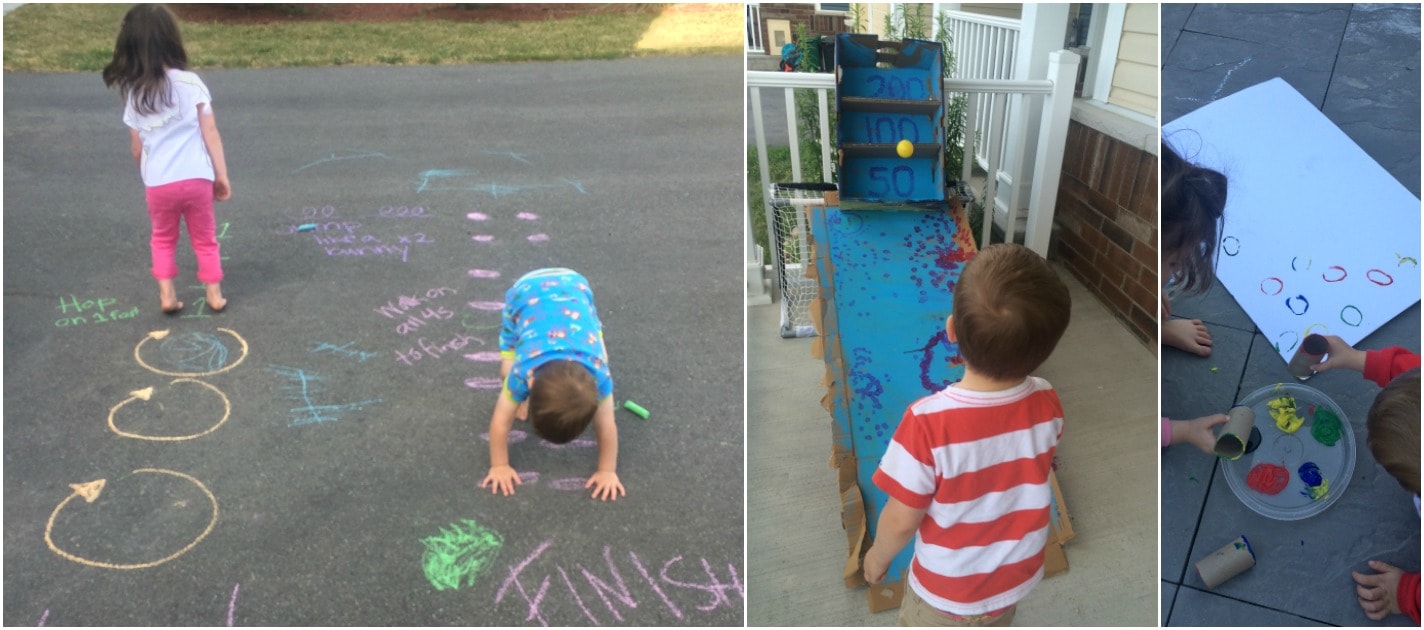

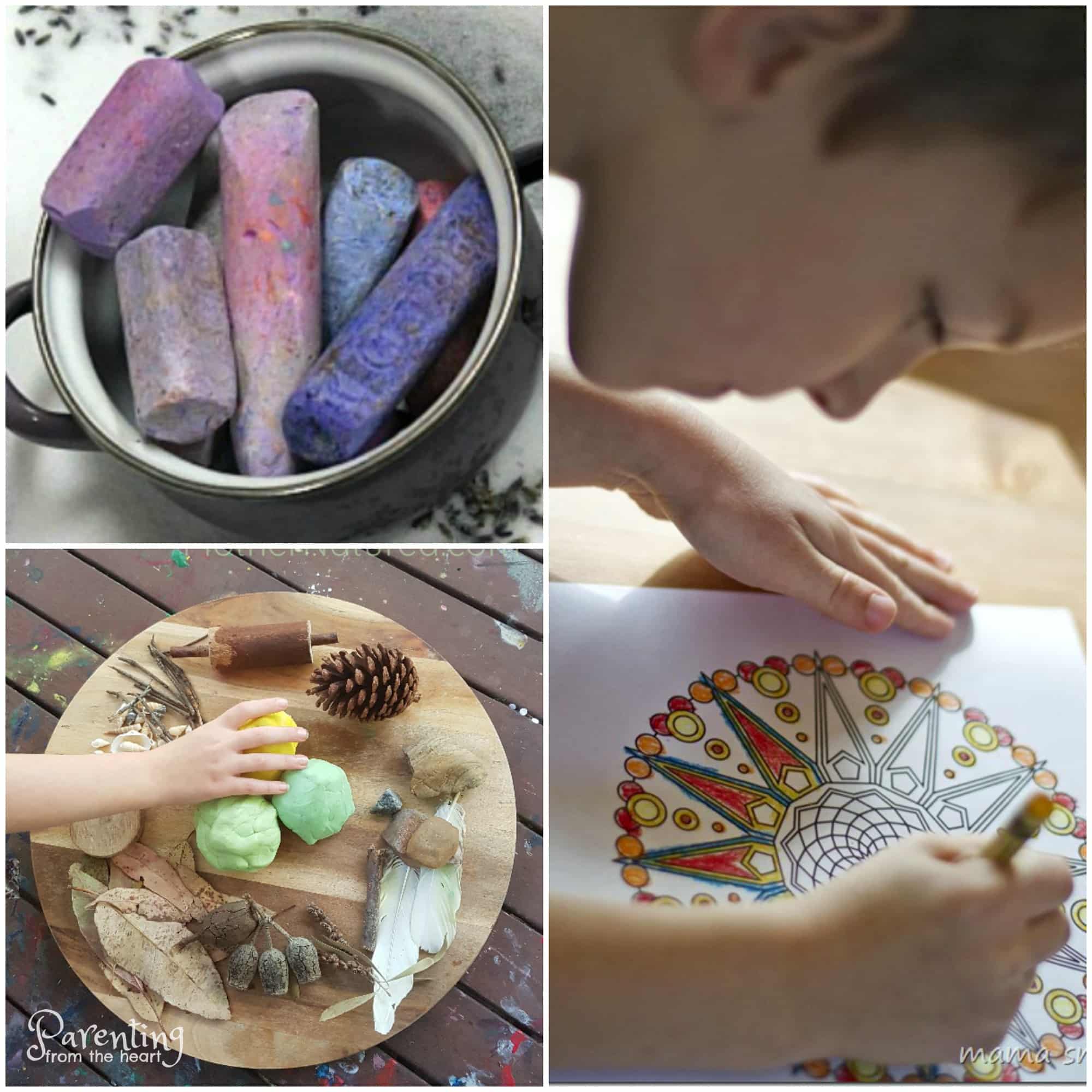
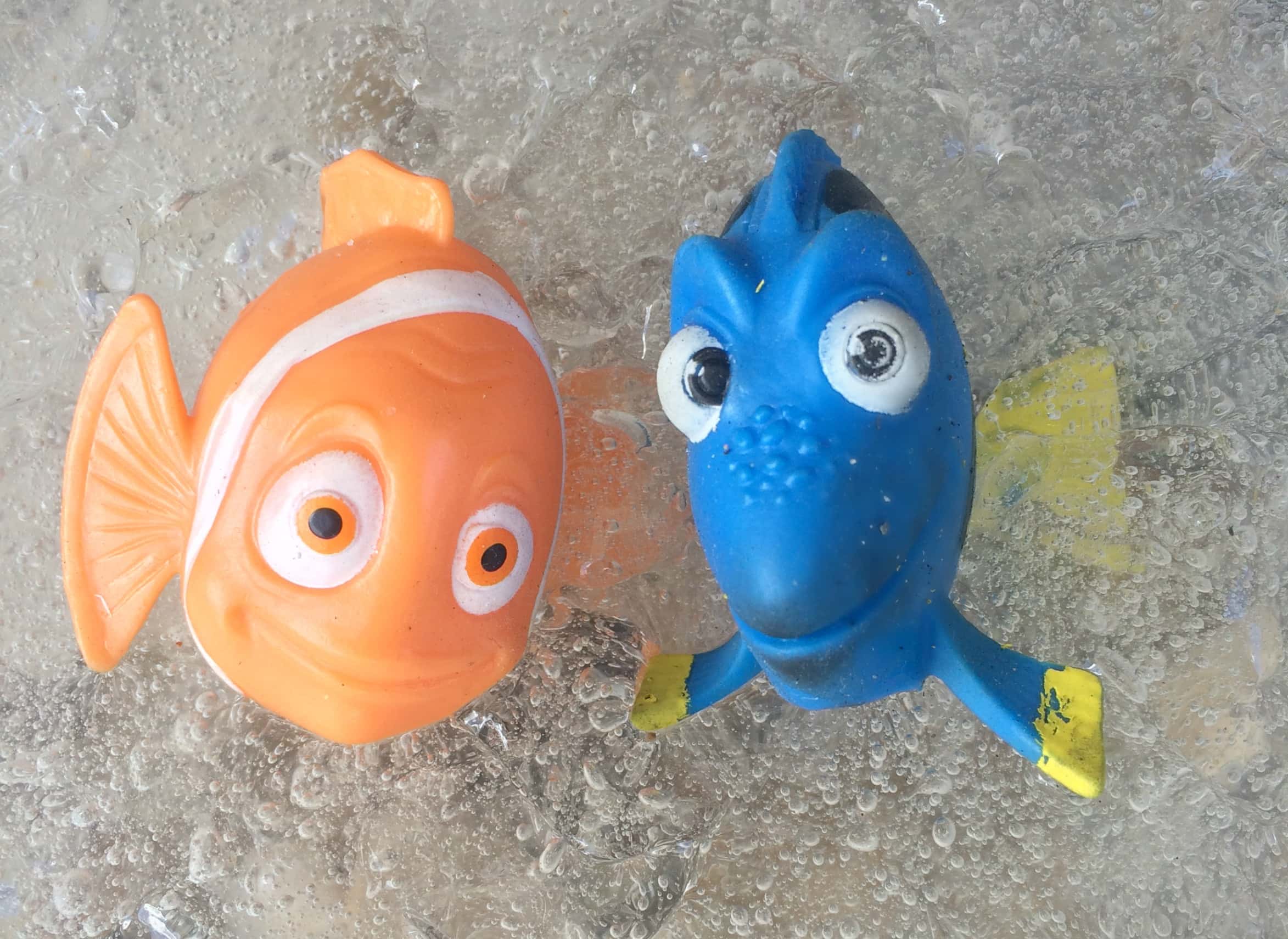
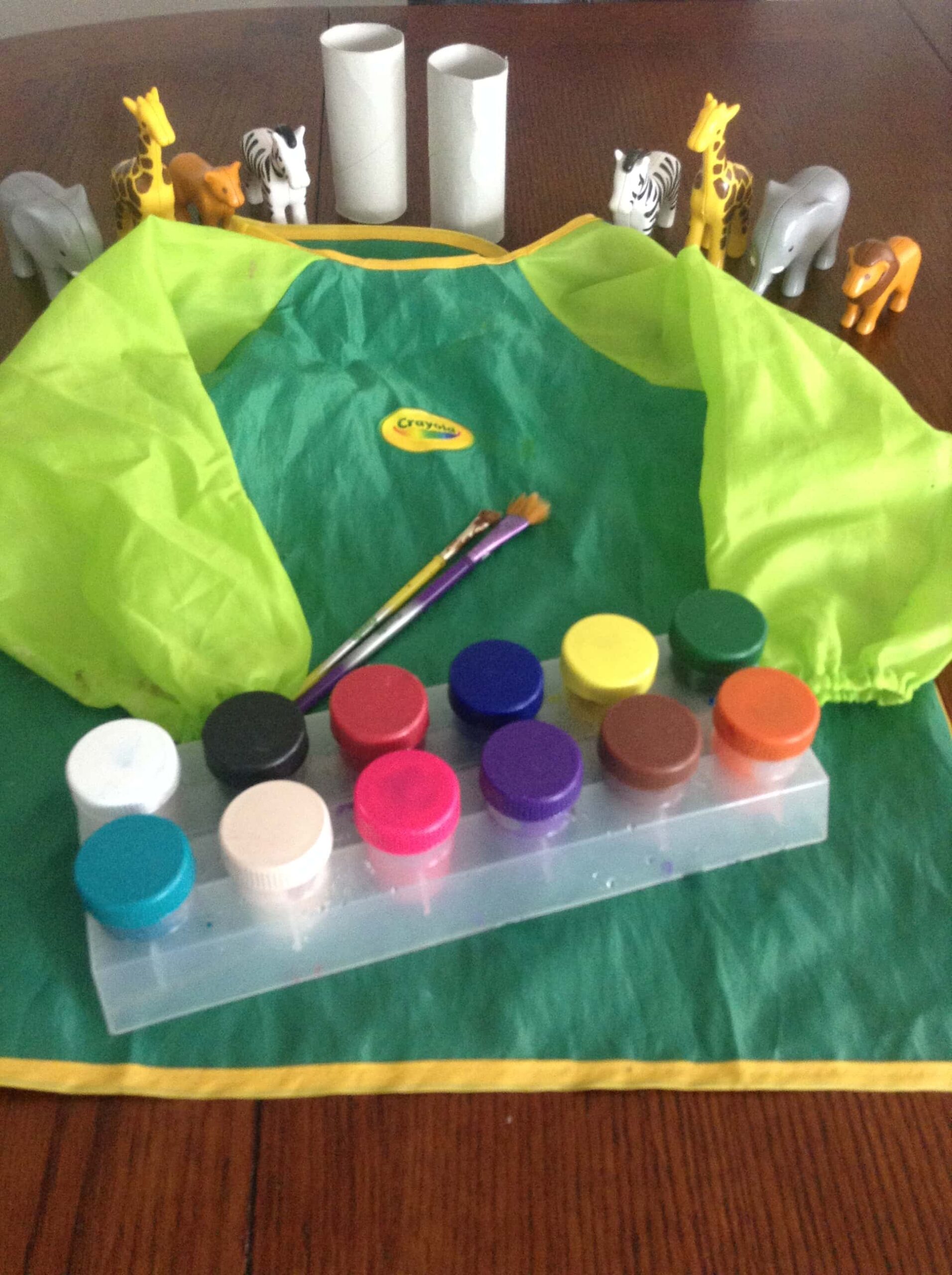
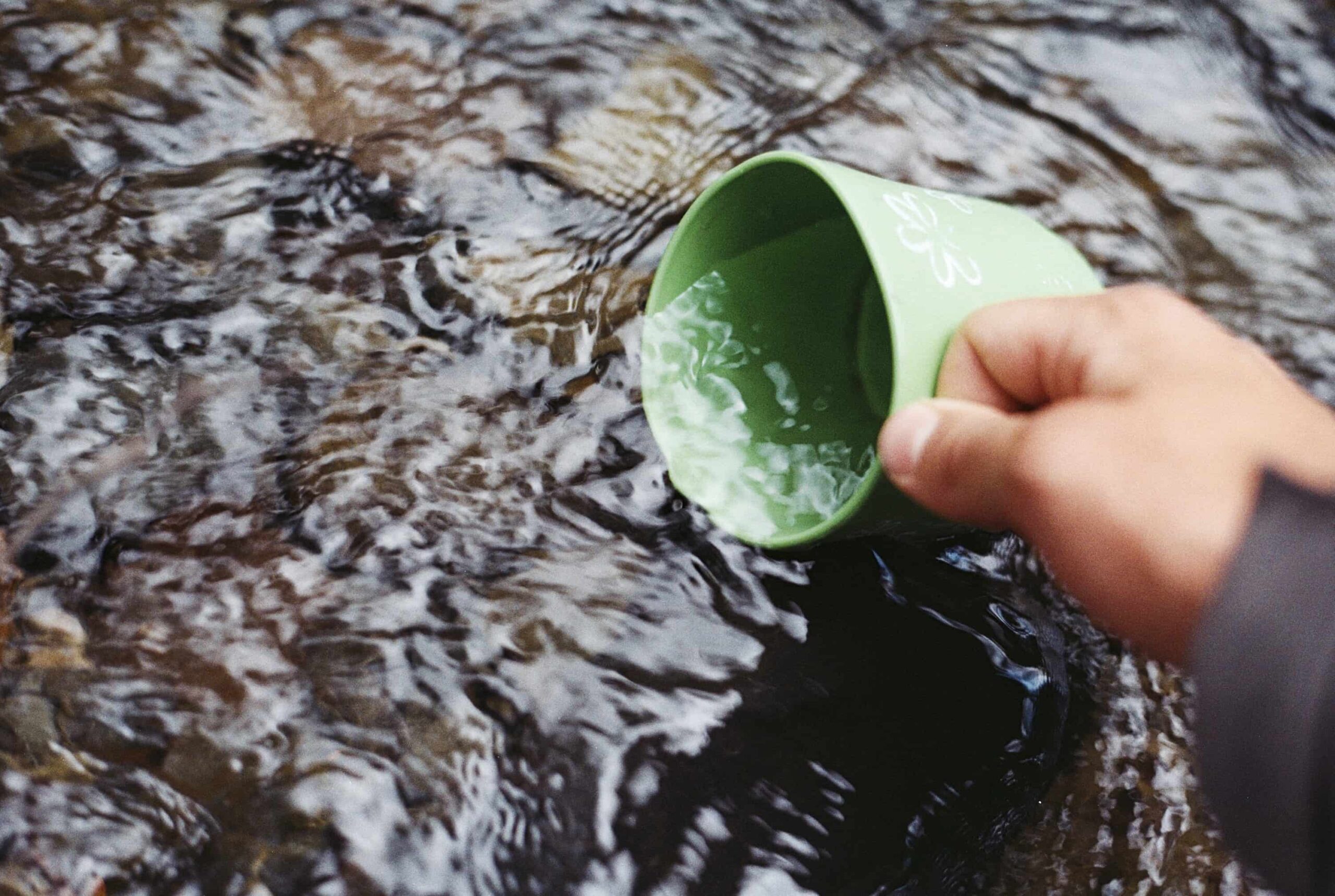
Thanks for noting me as inspiration!! I love that its still inspiring!
How fun! My favorite is the ring stamping. My boys love stamping, it doesn’t matter what the stamp looks like, dinosaurs or words. 🙂
I am a student teacher. I find your play-based activities very educative and engaging. it will provide a lot of laughter to preschoolers.
do not relent in your efforts
Thanks
Thank you so much for your kind words!